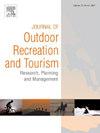手机用户位置数据在自然公园游客监测中的应用——以富士山为例
IF 4.4
3区 管理学
Q1 HOSPITALITY, LEISURE, SPORT & TOURISM
Journal of Outdoor Recreation and Tourism-Research Planning and Management
Pub Date : 2025-09-25
DOI:10.1016/j.jort.2025.100965
引用次数: 0
摘要
本研究明确了使用大数据(手机用户的位置数据)与使用传统收集方法获得的数据的优缺点,特别是在游客监测的背景下(例如,包括自然公园目的地游客的路径选择分析)。这是基于富士山的案例研究,使用NTT DoCoMo的移动空间统计(MSS)服务自动生成的手机用户位置数据(CLD)来完成的。结果表明,尽管存在一些局限性,但与现场问卷调查不同,MSS具有每年365天,每天24小时产生全国数据的优势,能够测量传统调查方法通常无法获得的特定时期或时间的人口动态。使用离散选择游憩需求模型对山间步道选择的影响因素进行分析,结果具有统计学意义,而用户的步道选择受到小屋数量、急救中心数量和步道拥堵程度的影响。综上所述,CLD在访客监测中具有很大的应用潜力。本文章由计算机程序翻译,如有差异,请以英文原文为准。
Application of cell phone users’ location data to visitor monitoring in natural parks: A case study of Mount Fuji
This study clarified the advantages and disadvantages of employing big data (cell phone users' location data), compared with data obtained using conventional collection methods, specifically within the context of visitor monitoring (e.g., trail-selection analysis including visitors to destinations in natural parks). This was accomplished based on a case study of Mount Fuji, using cell phone users' location data (CLD) generated automatically by NTT DoCoMo's mobile spatial statistics (MSS) service. The results indicated that, despite some limitations, MSS has the advantage of generating nationwide data 24 h a day, 365 days a year, unlike on-site questionnaire surveys, enabling the measurement of population dynamics during specific periods or times that are typically inaccessible through conventional survey methods. Analysis using the discrete-choice recreation demand model of the factors underlying the choice of mountain trails provided statistically significant results, while users' trail choice was found to be impacted by the number of cabins, the number of first-aid centers, and the trails' degree of congestion. Thus, it was concluded that CLD have significant potential for application to visitor monitoring.
求助全文
通过发布文献求助,成功后即可免费获取论文全文。
去求助
来源期刊

Journal of Outdoor Recreation and Tourism-Research Planning and Management
HOSPITALITY, LEISURE, SPORT & TOURISM-
CiteScore
6.70
自引率
5.30%
发文量
84
期刊介绍:
Journal of Outdoor Recreation and Tourism offers a dedicated outlet for research relevant to social sciences and natural resources. The journal publishes peer reviewed original research on all aspects of outdoor recreation planning and management, covering the entire spectrum of settings from wilderness to urban outdoor recreation opportunities. It also focuses on new products and findings in nature based tourism and park management. JORT is an interdisciplinary and transdisciplinary journal, articles may focus on any aspect of theory, method, or concept of outdoor recreation research, planning or management, and interdisciplinary work is especially welcome, and may be of a theoretical and/or a case study nature. Depending on the topic of investigation, articles may be positioned within one academic discipline, or draw from several disciplines in an integrative manner, with overarching relevance to social sciences and natural resources. JORT is international in scope and attracts scholars from all reaches of the world to facilitate the exchange of ideas. As such, the journal enhances understanding of scientific knowledge, empirical results, and practitioners'' needs. Therefore in JORT each article is accompanied by an executive summary, written by the editors or authors, highlighting the planning and management relevant aspects of the article.
 求助内容:
求助内容: 应助结果提醒方式:
应助结果提醒方式:


